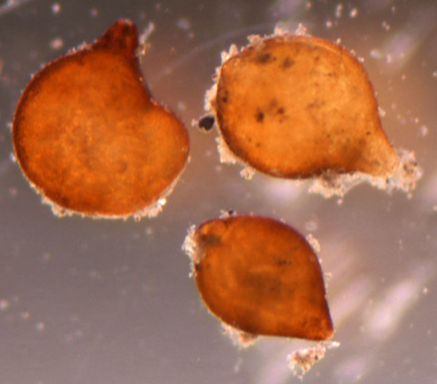With this year's drought conditions, the stress on soybeans was intensified by soybean cyst nematode (SCN) in many fields, causing visible yellow patches of stunted plants that we usually only see associated with high SCN populations.
|
|
In more typical years, low to moderate levels may be present in a field without visible symptoms on the aboveground part of the plant. To determine with certainty the SCN status of your soybean field, sampling is required.
Fall is an ideal time to sample for SCN. With overwinter survival of SCN near 100%, fall sampling provides a good estimation of the population that will be present at planting. Testing now gives you the time to prepare for variety selection for next year's soybeans.
Which fields should be tested? The answer is easy--every field where soybean will be grown should be evaluated for SCN. This nematode is a survivor. Once present in a soybean field, SCN is nearly impossible to eliminate; it manages to survive even in the absence of a good host. As it is very difficult to reduce high SCN levels to a manageable population, management should focus on keeping the egg count low in the first place.
One sample should represent no more than 10 acres and comprise 20 to 30 subsamples. Each subsample should be taken 8 to 10 inches deep. Mix the subsamples in a bucket and remove enough soil to fill a one-quart plastic bag. Mail this bag to a qualified laboratory for analysis. Results will be reported in either number of cysts or (preferably) number of eggs per 100 cc of soil.
Once SCN is detected in a soybean field, the egg count should be checked regularly to monitor the field population and assess management practices. The frequency of sampling will depend on the management protocol, the SCN egg count, and often the SCN "Type" of the specific field population.
If consistent rotations with a nonhost such as corn have been implemented and the SCN egg count has typically been low in the field, chances are the SCN level is well managed, and sampling may be spaced to every third year that soybeans are grown.
However, if soybeans are grown back to back, if SCN egg counts have been high, or if the SCN population is able to develop on resistant varieties, more frequent sampling may be needed.
When soybeans are consistently grown in a SCN-infested field, even if (and sometimes especially if) resistant soybean varieties are grown, monitoring the SCN egg count can ensure that the variety being grown has effective resistance against the field population.
Often, a grower may use a soybean variety with resistance to SCN only to discover that the type of resistance was not effective against the specific field population, thus allowing the population to increase in that field. In addition, this type of population increase leads to a greater proportion of SCN capable of reproducing on resistant varieties.
When SCN egg counts are moderate to high and soybeans are to be grown, or if your resistant variety rotation does not seem to be managing the pest, then it's a good idea to perform a greenhouse assay called the "SCN Type test" (formerly known as an SCN race test).
This test evaluates the field population's development on the three sources of resistance found in varieties currently available to Illinois producers and so provides information about the most effective type of resistance for a specific field. Variety selection can be narrowed to the resistant soybean varieties that will provide effective resistance and prevent increases in the SCN population.

 Mature female cysts of soybean cyst nematode Heterodera glycines, extracted from a soil sample full of live nematode eggs viewed under the stereomicroscope.
Mature female cysts of soybean cyst nematode Heterodera glycines, extracted from a soil sample full of live nematode eggs viewed under the stereomicroscope.




Post a comment
Report Abusive Comment